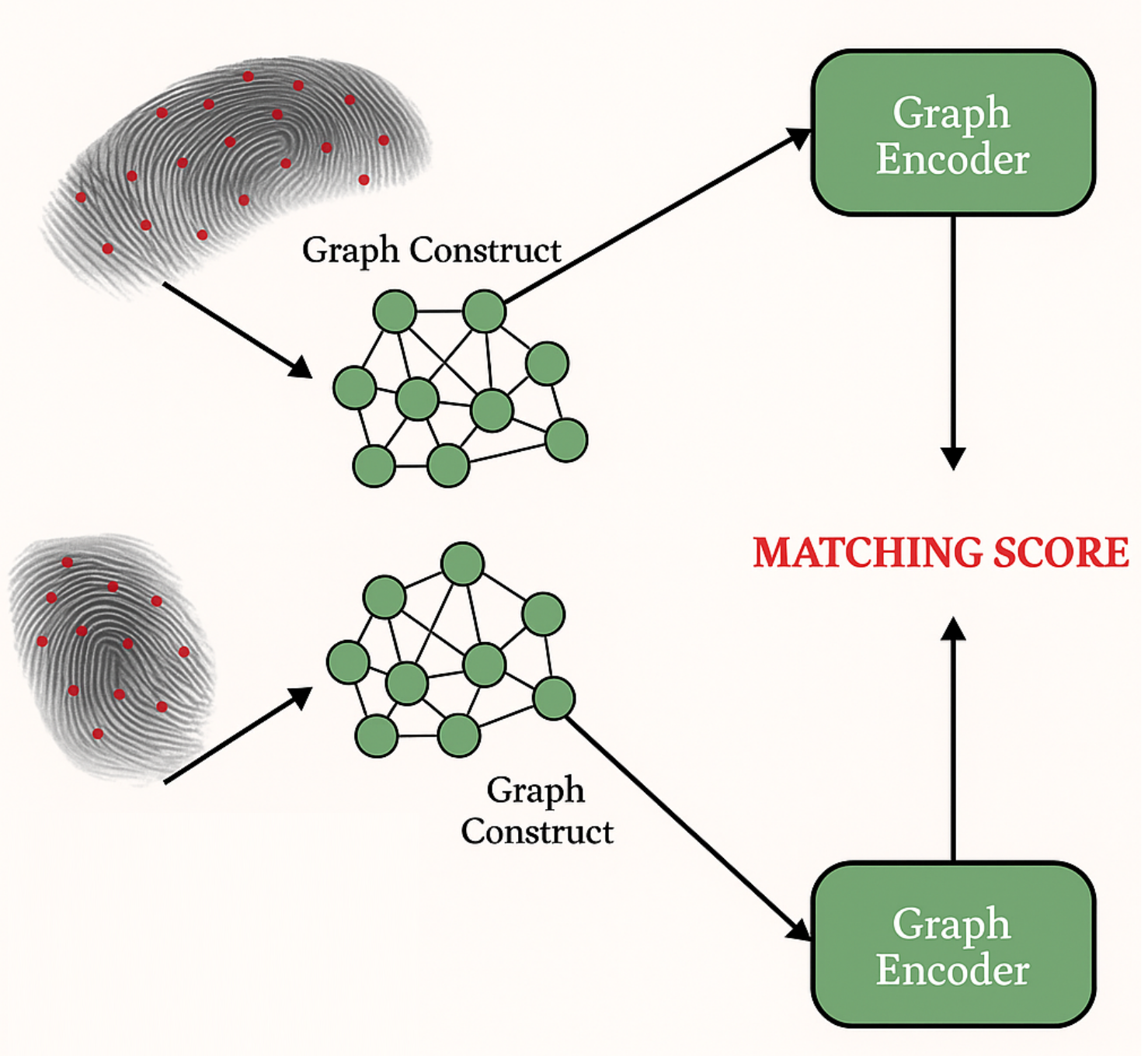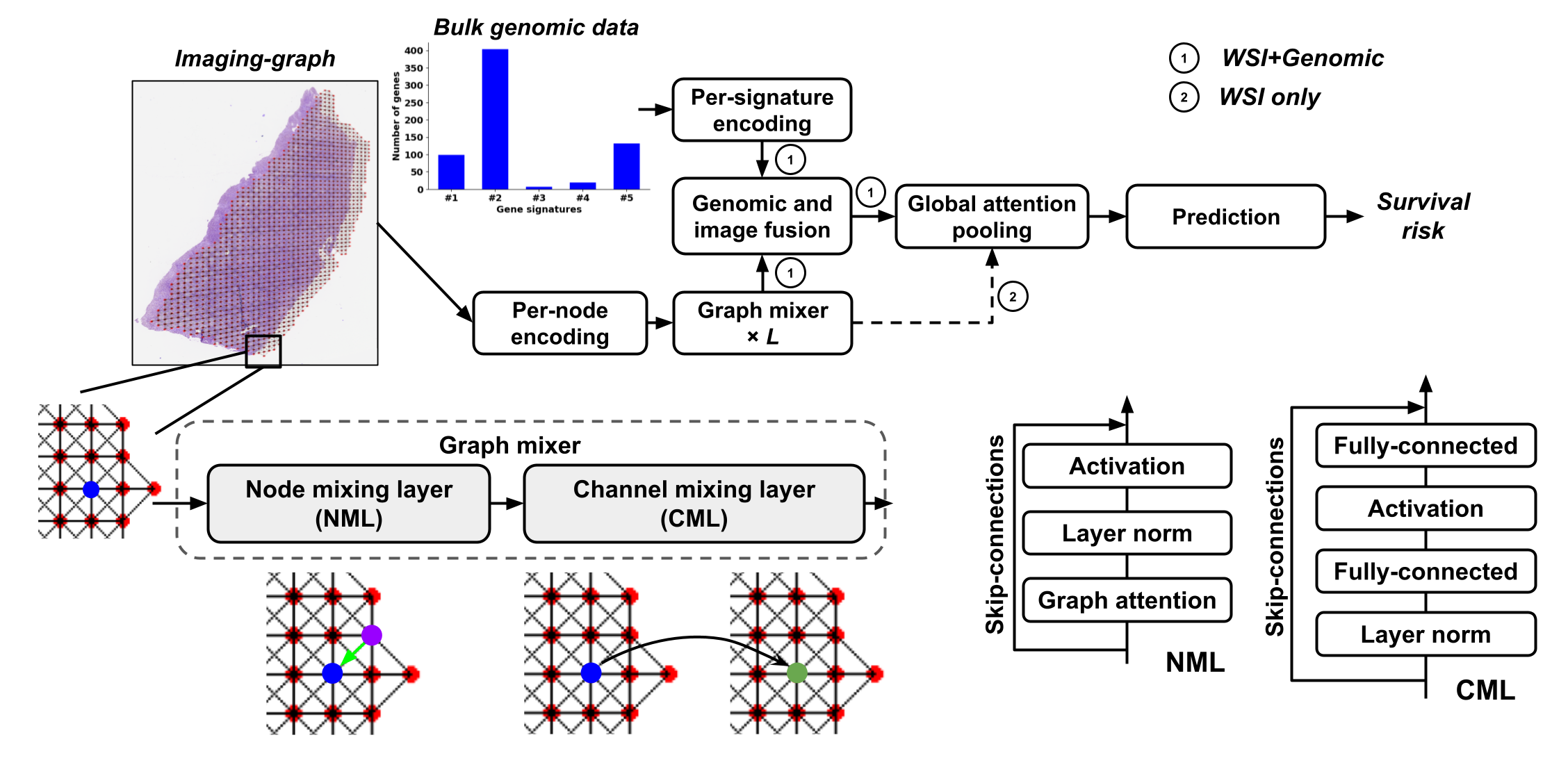Compact Minutiae Detection Model using a Non-NMS Tiny Object Detection
Short description of non-NMS end-to-end minutiae detection 
Short description of non-NMS end-to-end minutiae detection 
Short description of deep learning graph-based fingerprint matching
Short description of GTP Network 
Short description of vision-language fusion model 
Published in International Workshop on Multimedia Assisted Dietary Management, 2019
We propose a scrape-by-location methodology to create food image datasets from Instagram posts. We applied our techniques to the millions of Instagram posts we collected across Kenya over a period of 20 days to give an example of the kind of analysis social scientists may conduct with our tools.
Recommended citation: M. Jalal, K. Wang, S. Jefferson, Y. Zheng, E. O. Nsoesie, M. Betke, 'Scraping Social Media Photos Posted in Kenya and Elsewhere to Detect and Analyze Food Types', Proceedings of the 5th International Workshop on Multimedia Assisted Dietary Management, 2019
Download Paper
Published in Computer Vision and Pattern Recognition Workshop, 2019
UHT, short for UNet, Heatmap, and Textfill, uses a UNet to compute heatmaps for candidate text regions and a textfill algorithm to produce tight polygonal boundaries around each word in the candidate text.
Recommended citation: Q. Wang, Y. Zheng, and M. Betke, A method for detecting text of arbitrary shapes in natural scenes that improves text spotting, Computer Vision and Pattern Recognition Workshop 2020
Download Paper
Published in ACM International Conference on Multimedia, 2020
Linguistically Aware Learning (LAL) scene text recognizer is a a bimodal framework that simultaneously utilizes visual and linguistic information to enhance scene text recognition performance.
Recommended citation: Y. Zheng, W. Qin, D. Wijaya, and M. Betke, LAL: Linguistically aware learning for scene text recognition, ACM International Conference on Multimedia 2022
Download Paper
Published in The American Journal of Pathology, 2021
Our framework to analyzing microscopic- and WSI-level changes in renal biopsies attempts to mimic the pathologist and provides a regional and contextual estimation of IFTA. Such methods can assist clinicopathologic diagnosis.
Recommended citation: Yi Zheng, Clarissa A. Cassol, Saemi Jung, Divya Veerapaneni, Vipul C. Chitalia, Kevin Ren, Shubha S. Bellur, Peter Boor, Laura M. Barisoni, Sushrut S. Waikar, Margrit Betke , Vijaya B. Kolachalama, Deep-learning–driven quantification of interstitial fibrosis in digitized kidney biopsies, The American Journal of Pathology 2021
Download Paper
Published in IEEE International Conference on Image Processing, 2021
Semantic-based Sentence Recognition (SSR) can efficiently understand the context between regions of text or between words in images by extracting sentences or paragraphs from images instead of only isolated text regions or words.
Recommended citation: Yi Zheng, Qitong Wang, Margrit Betke, Semantic-Based Sentence Recognition in Images Using Bimodal Deep Learning, IEEE International Conference on Image Processing
Download Paper
Published in IEEE Transactions on Medical Imaging, 2022
We present a Graph-Transformer (GT) based framework for processing pathology data, called GTP, that interprets morphological and spatial information at the WSI-level to predict disease grade.
Recommended citation: Y. Zheng, R. Gindra, M. Betke, J. E. Beane, V. B. Kolachalama, A deep learning-based graph-transformer for whole slide image classification, IEEE Transactions on Medical Imaging 2022
Download Paper
Published in Journal of the American Society of Nephrology, 2022
A deep learning framework known as a feature pyramid network (FPN) was implemented to classify digitized renal biopsies as class I or II DN. Our study identified several regions on the biopsy images as informative for prediction of class I vs II DN. Further analysis can elucidate the importance of various histopathological features of early stage DN.
Recommended citation: L. Claus, Y. Zhang, Y. Zheng, T. Surendan, V. Chitalia, P. Walker, C. Cassol, V. B. Kolachalama, Computational Assessment of Early Diabetic Nephropathy, Journal of the American Society of Nephrology 2022
Download Paper
Published in The American Journal of Pathology, 2024
We present a graph-based deep learning framework that leverages hematoxylin and eosin–stained pathology images to stratify bronchial premalignant lesions and predict their progression to invasive lung squamous cell carcinoma.
Recommended citation: R. Gindra, Y. Zheng, D. Venkatraman, R. Conrad, E. Green, S. Mazzilli, E. Billatos, M. Reid, E. Burks, V. B. Kolachalama, J. E. Beane, Graph perceiver network for lung tumor and bronchial premalignant lesion stratification from histopathology The American Journal of Pathology 2024.
Download Paper
Published in IEEE Transactions on Medical Imaging, 2024
We present an attention-based fusion architecture that integrates a graph representation of pathology images with gene expression data and concomitantly learns from the fused information to predict patient-specific survival.
Recommended citation: Y. Zheng, R. D. Conrad, E. J. Green, E. J. Burks, M. Betke, J. E. Beane, V. B. Kolachalama, Graph attention-based fusion of pathology images and gene expression for prediction of cancer survival, IEEE Transactions on Medical Imaging 2024
Download Paper
Published in International Journal of Computer Vision, 2025
Recommended citation: Yi Zheng, Harsh Sharma, Margrit Betke, Jennifer E. Beane, Vijaya B. Kolachalama, FourierMIL: Fourier filtering-based multiple instance learning for whole slide image analysis, International Journal of Computer Vision 2025
Download Paper
Published:
This is a description of your talk, which is a markdown file that can be all markdown-ified like any other post. Yay markdown!
Published:
This is a description of your conference proceedings talk, note the different field in type. You can put anything in this field.
Graduate course, Boston University, Department of Computer Science, 2017
I am responsible for teaching the laboratory sections and helping students out during my office hours. I also help to design the written homework and programming projects, and manage the graders. I am also responsible for co-teaching the lectures and provided help with the course materials outside the classroom.
Undergraduate course, Boston University, Department of Computer Science, 2018
Assist with grading, office hours, and lead discussion/lab sessions to reinforce lecture material.
Graduate course, Boston University, Department of Computer Science, 2018
I am responsible for teaching the laboratory sections and helping students out during my office hours. I also help to design the written homework and programming projects, and manage the graders. I am also responsible for co-teaching the lectures and provided help with the course materials outside the classroom.
Undergraduate course, Boston University, Department of Computer Science, 2019
Assist with grading, office hours, and lead discussion/lab sessions to reinforce lecture material.